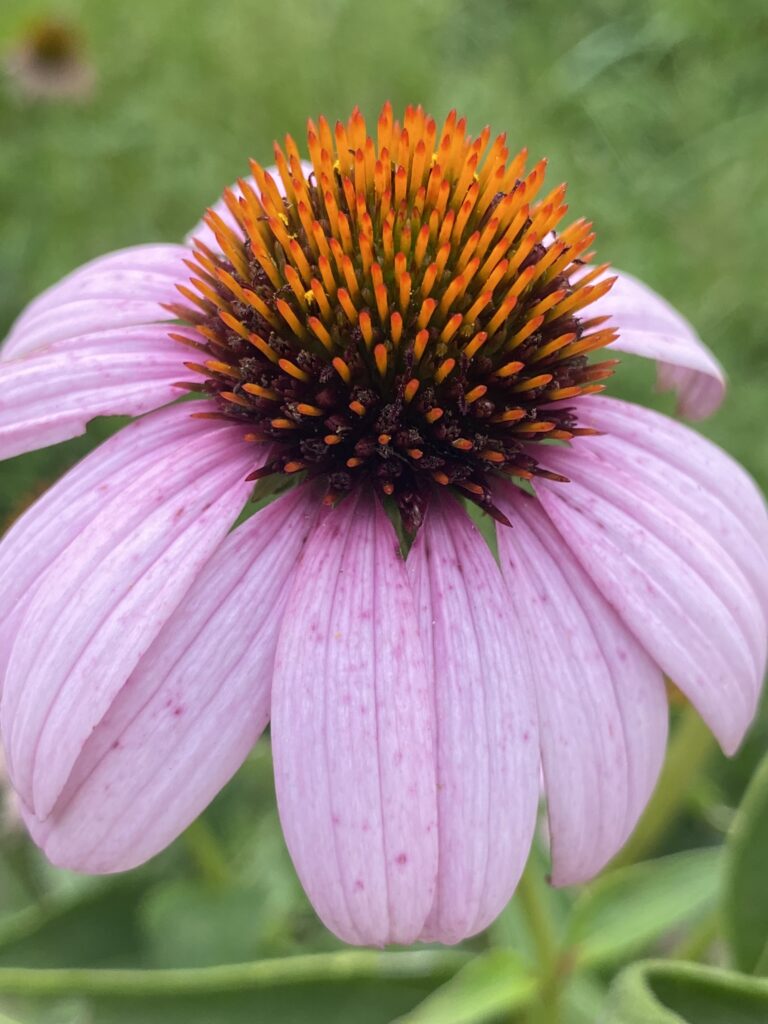Photograph by: Abby Cali
What is this plant?
Eastern Purple Coneflower (Echinacea purpurea) is a perennial with lavender-colored petals and a spiny, brownish center. It is an easy-to-grow plant and a popular ingredient for teas, spices, and extracts. Eastern Purple Coneflower is a great plant for attracting pollinators like butterflies and bees. The plant grows in clumps and can reach up to 4 feet in height. It is best when planted in zones 3-9. They can bloom from early summer to the late fall (even lasting until the first frost).
Plant Information
Plant Type: Perennial
Light: Full to Partial Sunlight
Height: Can grow up to 4 feet tall, 12-36 inches wide
Days to Maturity: Seeds germinate in 10-20 days. Flowers can bloom during first year if seeds sown early.
Zone: 3-9
Color: Purple, Lavender
Bloom Time: April – September
Other: Purple Coneflower can spread aggressively
Growing from Seed
- Seeds can be started 8-10 weeks before the last spring frost if started indoors
- Seeds can be planted outdoors when the soil has warmed to at least 65°F
- If sowing from seed, plants may not bloom for 2-3 years
Growing from Seedling
- Dig a hole that is twice the size of the pot’s diameter
- Set the plant in the hole so the root ball is level with the surface of the soil
- Fill in the hole to cover the top of the root ball
- Space your seedlings/plants about 1-3 feet apart
- Spread a layer of compost/mulch on the surface of the soil to keep the plants mosit and deter weed growth
Growing & Care Tips
Once purple coneflower plants are established, the plant can be drought tolerant. New plants will need to be watered more frequently, especially during a dry spring. If the plant is native to your region (I’ve seen this plant all over the United States), you should not need to add any fertilizer.
During August, soldier beetles may appear to feed on insect eggs and larvae. The soldier beetles also pollinate the plants. Do not harm them! They are wasplike creatures, but beneficial for the plants.
After frost, or during winter, you can cut the stems down to soil level.
Plant Uses & Benefits
- Used as medicine for colds, coughs, and infections
- Used in teas and herbal mixes
- Deer-resistant
- Attracts butterflies, bees, and hummingbirds
- Mild antibiotic
History of the Plant
The Easter Purple Coneflower comes from the genus echinacea, which comes from the Latin name for hedgehog (echinus). It was used by Native Americans as their primary medicine for various ailments.
References
www.almanac.com
www.wildflower.org

